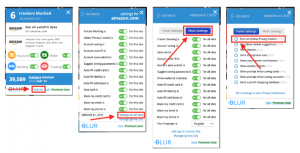A blog can be one of your most valuable marketing assets, as it can bring targeted leads to your content and engage them throughout every stage of your sales cycle. Here’s what to include in all of your blog posts to boost your readership, shares, and conversions…

Woo-hoo!
You’re ready to publish your latest blog post and bring more targeted leads to your content. But before you queue it up, take a moment to review this checklist to make sure your post contains everything you need to engage leads, increase your social shares and drive conversions.
Here are nine things to check before you publish your next blog post:
1. Your topic
Is your topic something that will appeal to your target audience? Does it help them solve one of their key challenges? Avoid publishing blog posts that just talk about your products or your company. These usually aren’t helpful and won’t bring you many readers.
2. Your title
Your title is what motivates readers to check out your blog posts. This is why many top bloggers recommend that you spend as much time developing your title as you spend writing the rest of your blog post. Here are a few tips on titles:
- Titles that include “How to” or numerals tend to perform well.
- Keep your title under 65 characters and put your most important message at the beginning. This ensures that readers can get your message if they are viewing the title on a mobile device.
- Include your main keyword or key phrase in your title.
3. Your summary
It’s a good idea to include a short summary (less than three sentences) directly beneath your blog post’s title. The summary should clearly state why people must read your blog post. A well-crafted summary can increase your readership and shares.
4. Your images and/or videos
Did you include an interesting feature image at the top of your blog post? Use your own images whenever possible, as they reflect your brand better than boring clip art. Break up long blog posts with additional images, videos and charts. Also be sure to optimize your images for SEO, as your images can have an impact on your Google rankings.
5. Your keywords
Google is placing less importance on keywords and more importance on high-quality content. However, using keywords can still help you get found. Here are a few places to include your keywords:
- Your page title and meta tags
- Your blog post title
- Your subheads
- A few times in your body copy – don’t go crazy
- Anchor text that links to other pages on your website
- Your images
- Your blog post tags and categories
6. Your blog post’s readability
Most people skim blog posts, rather than read them word for word. That’s why you must break up your text using subheads, bullet points, numbered lists and short paragraphs. You can also draw attention to key points with bold text and call-outs.
In addition, read through your post and ask if it sounds like a human wrote it or a robot wrote it. Cut the marketing fluff and corporate jargon.
7. Your links
Do all of your links work? Did you include links to other areas of your website to encourage readers to check out more of your content? Did you link back to anyone whom you quoted or any research that you cited?
8. Your call to action
Did you include a compelling call to action that relates directly to your blog post’s topic? For example, if you publish a blog post on cloud security, you can promote a webinar on the same topic. The more your opt-in offer relates to your blog post, the more you can build your list.
9. Your author bio
People like to interact with people – not with companies. Including the author’s bio and contact information will make your company more human.
And finally, be sure to proofread your post to make sure it doesn’t go out with any glaring typos.
Here’s to your blogging success!
Download the B2B Blog Post Pre-Flight Checklist, so you can ensure each of your blog posts hits the mark with your readers.
(251)
Report Post







